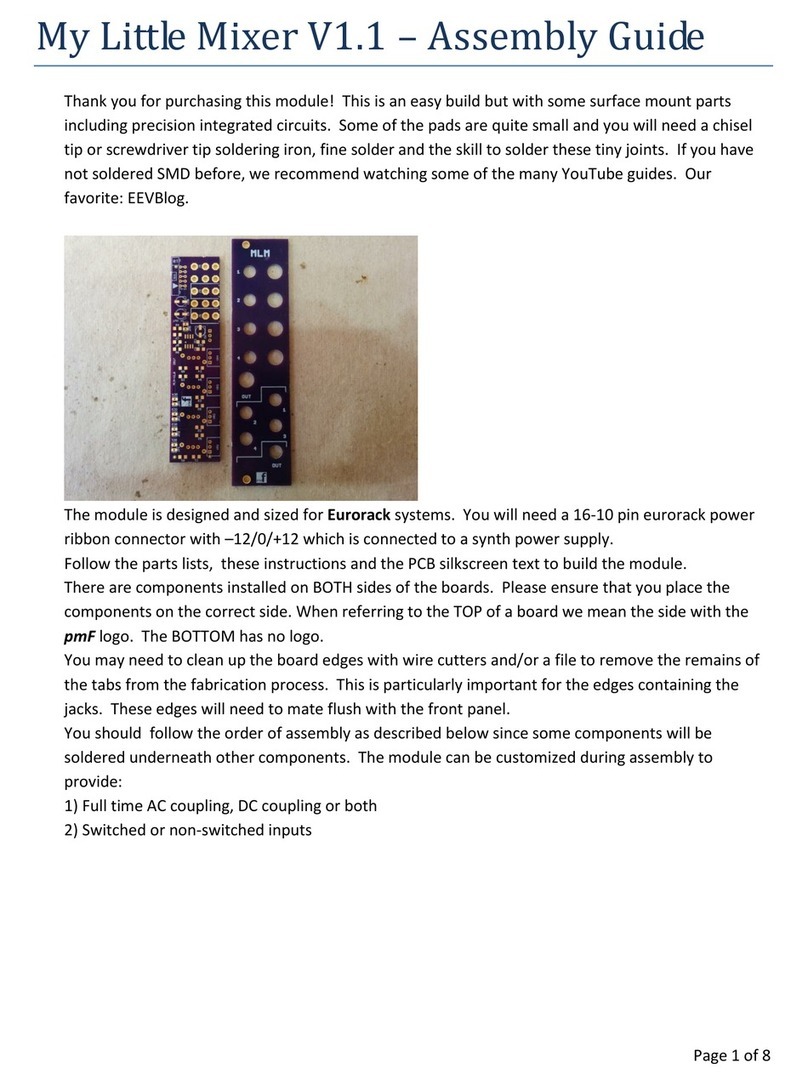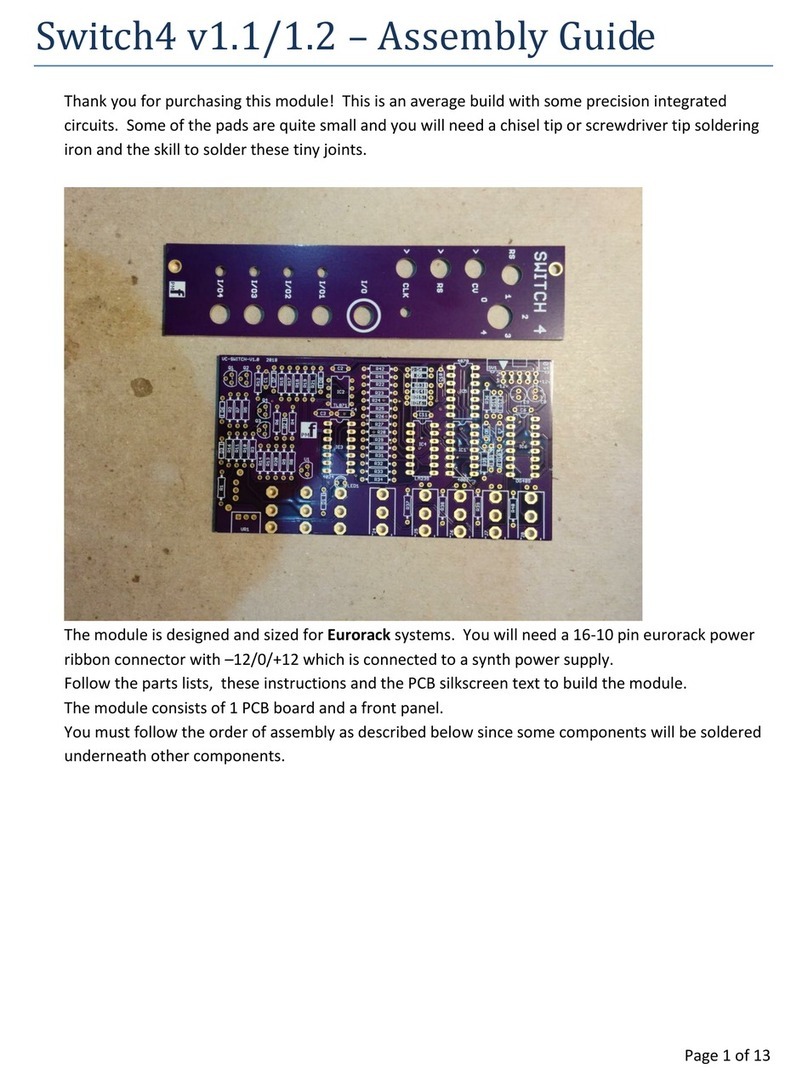PMFoundations Euro-ADSR User manual
Other PMFoundations Control Unit manuals
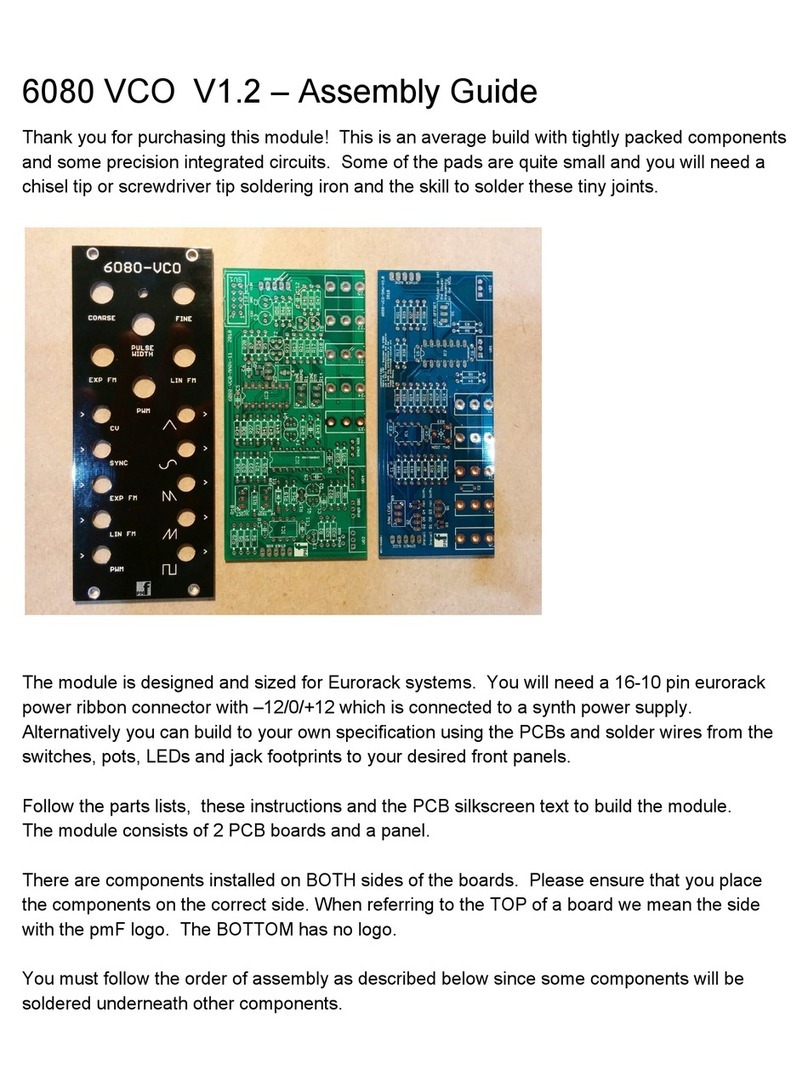
PMFoundations
PMFoundations 6080 VCO User manual

PMFoundations
PMFoundations Attenuverter User manual

PMFoundations
PMFoundations Clock Divider User manual
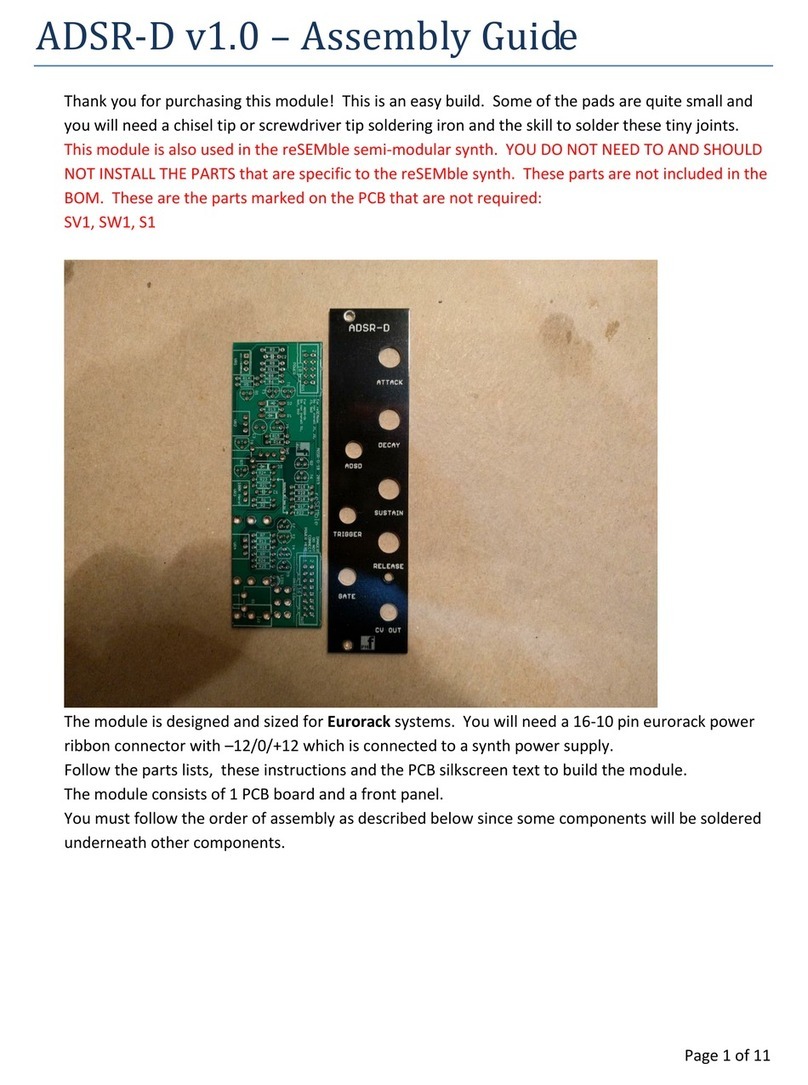
PMFoundations
PMFoundations ADSR-D User manual

PMFoundations
PMFoundations ER-808 User manual
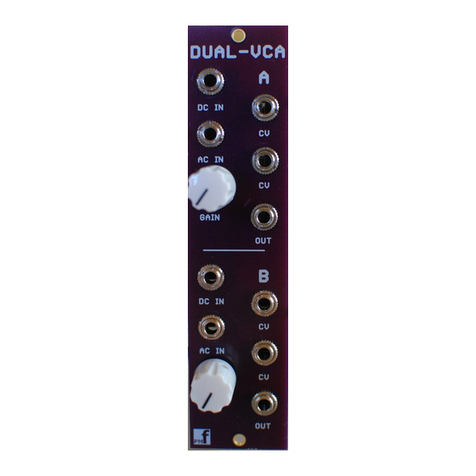
PMFoundations
PMFoundations Dual VCA User manual
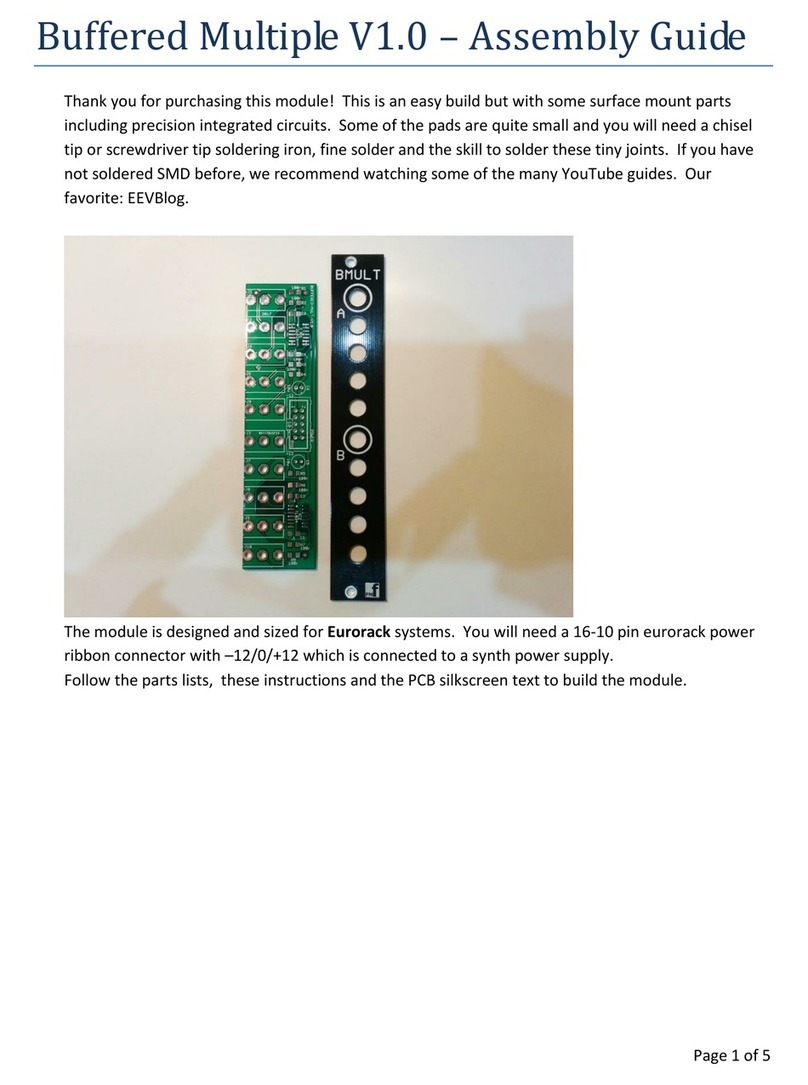
PMFoundations
PMFoundations Buffered Multipl User manual

PMFoundations
PMFoundations 3080 VCO v1.2 User manual

PMFoundations
PMFoundations State Machine User manual

PMFoundations
PMFoundations Clock User manual
